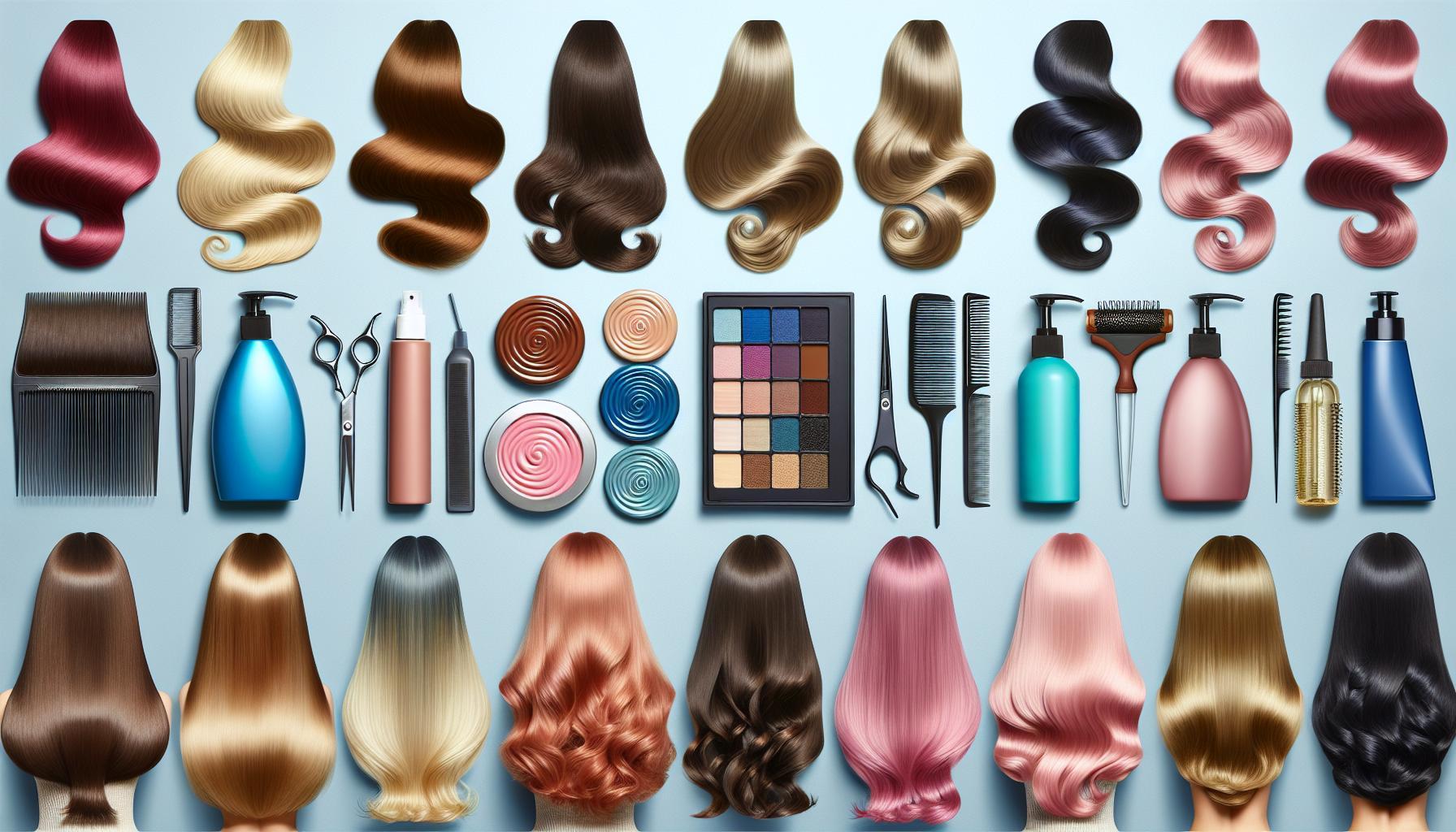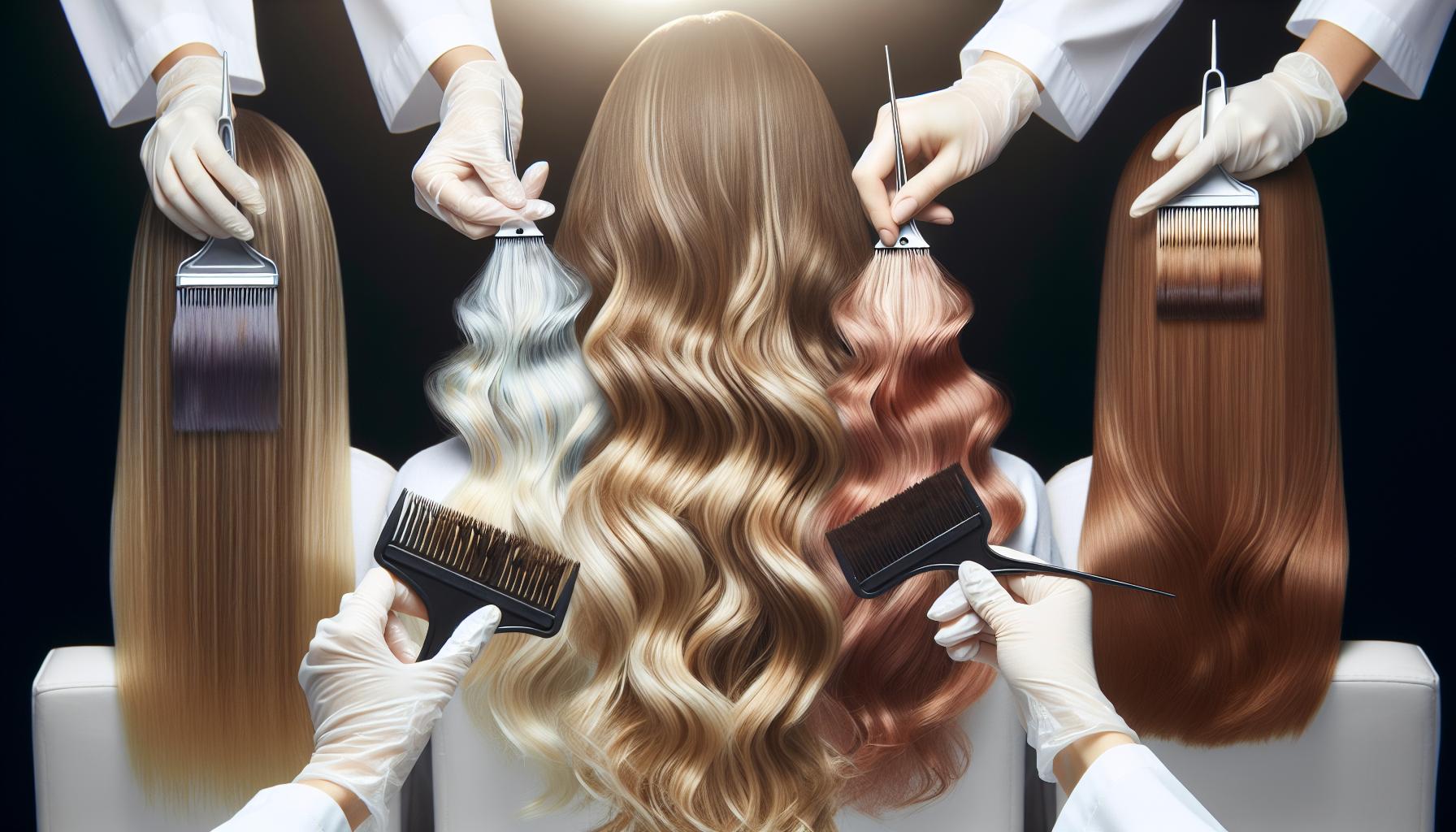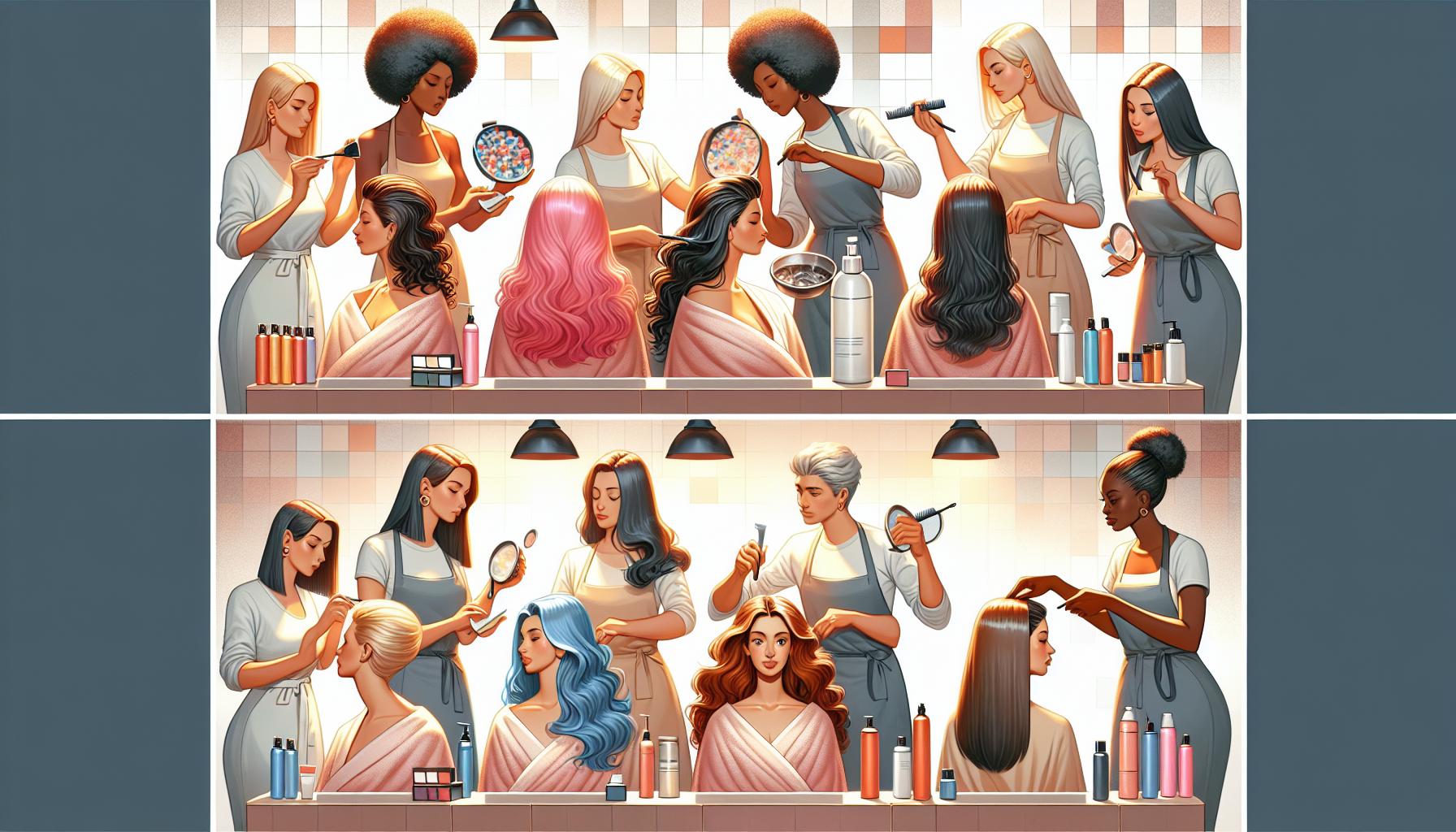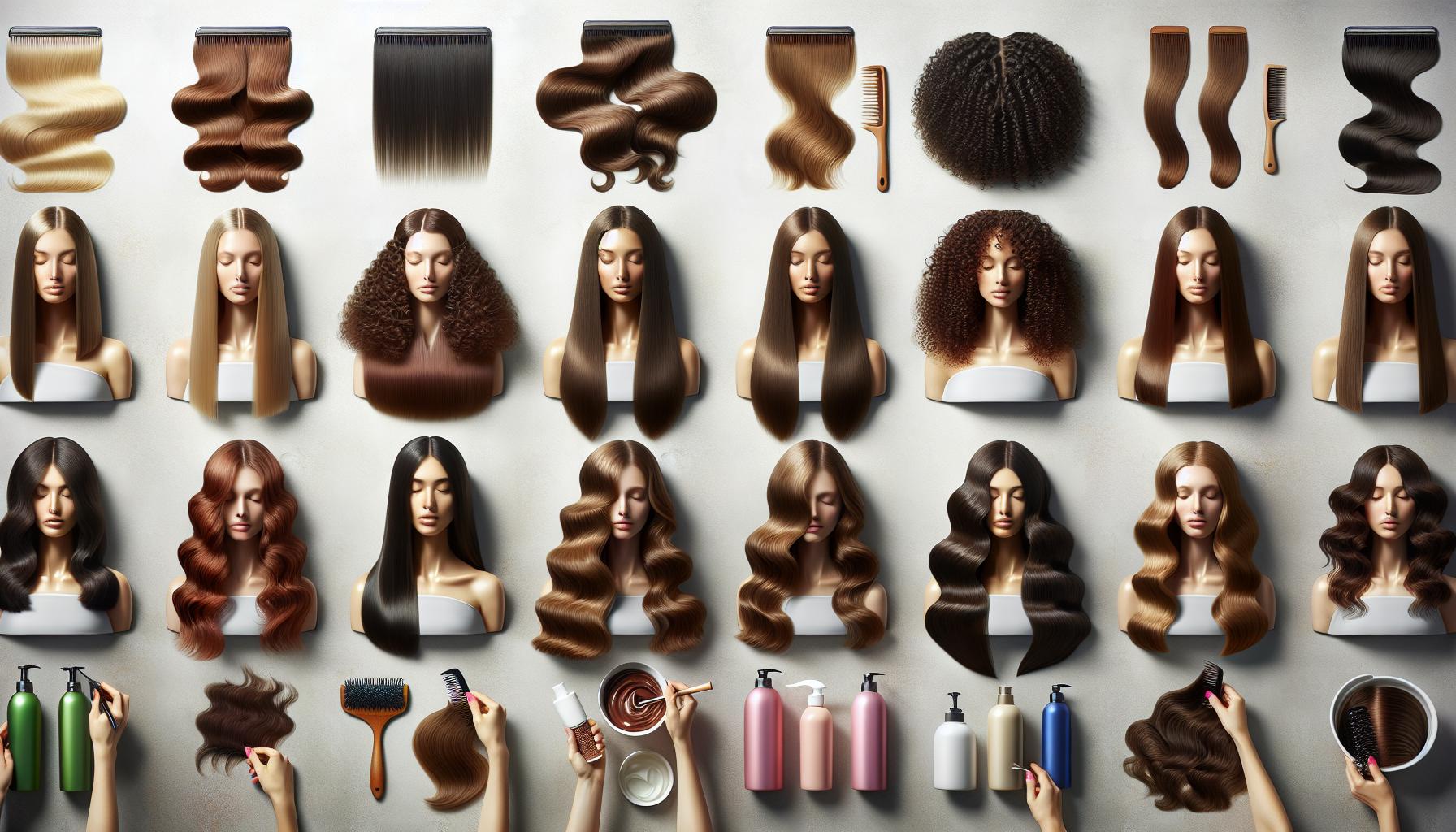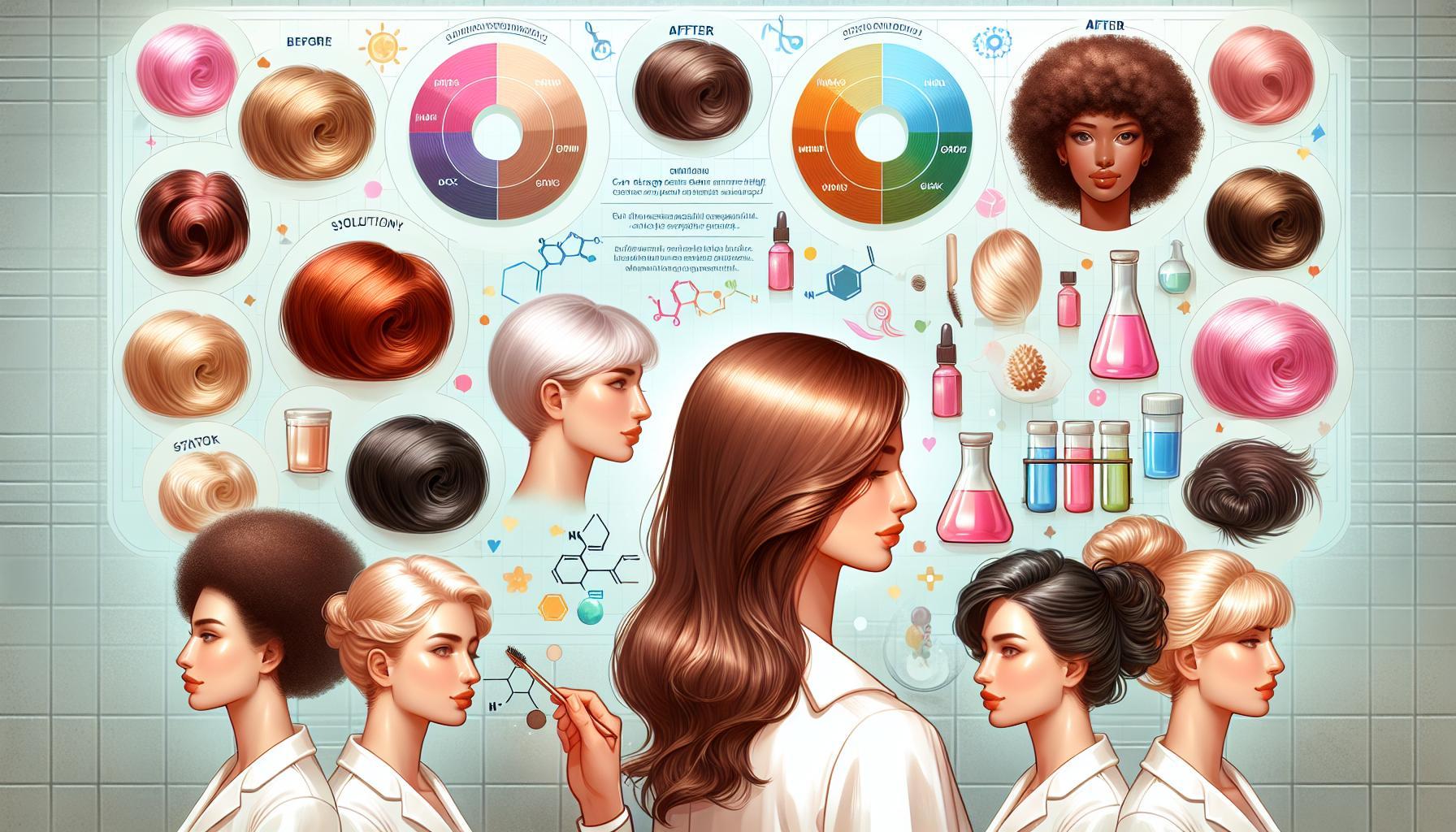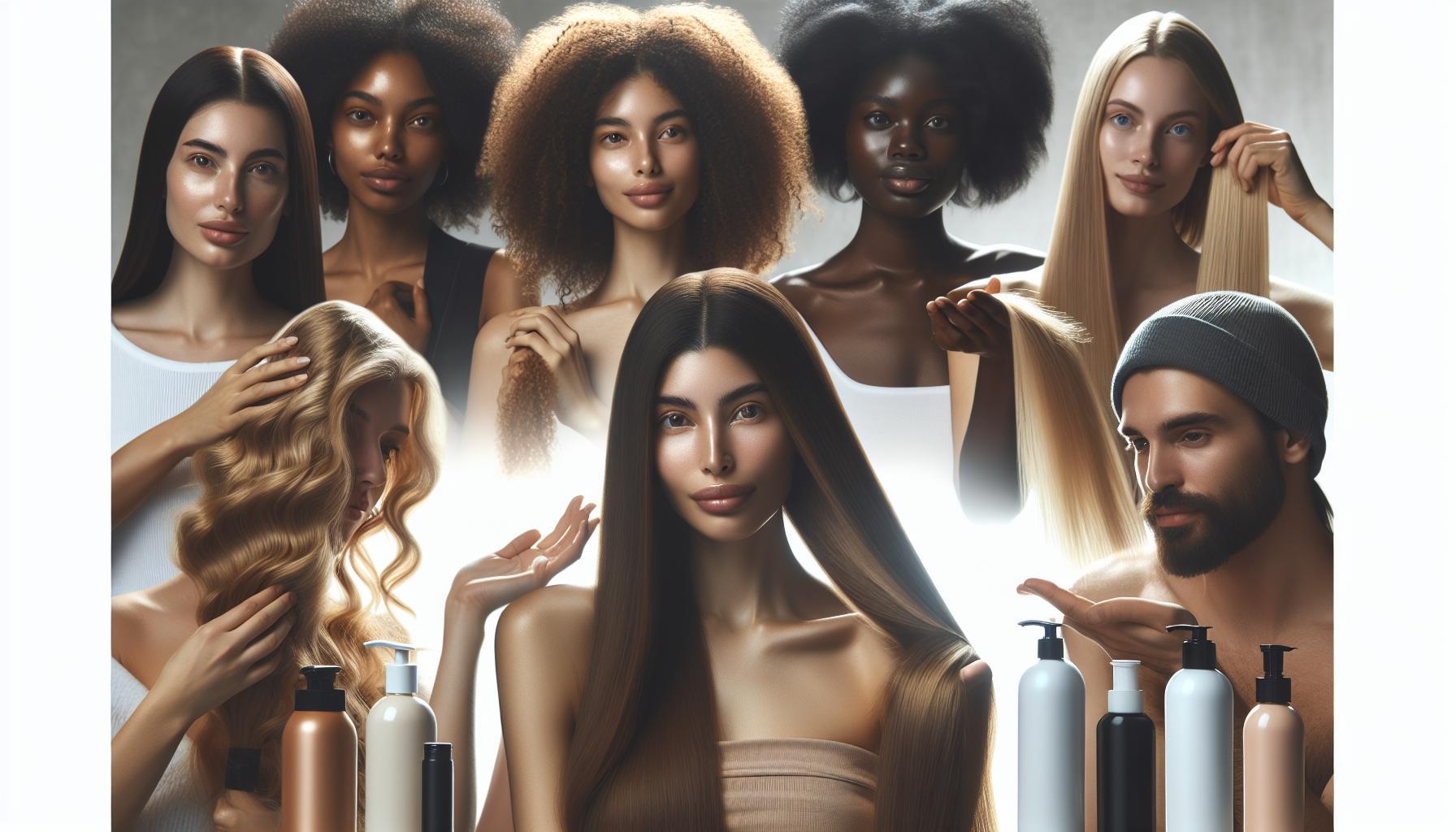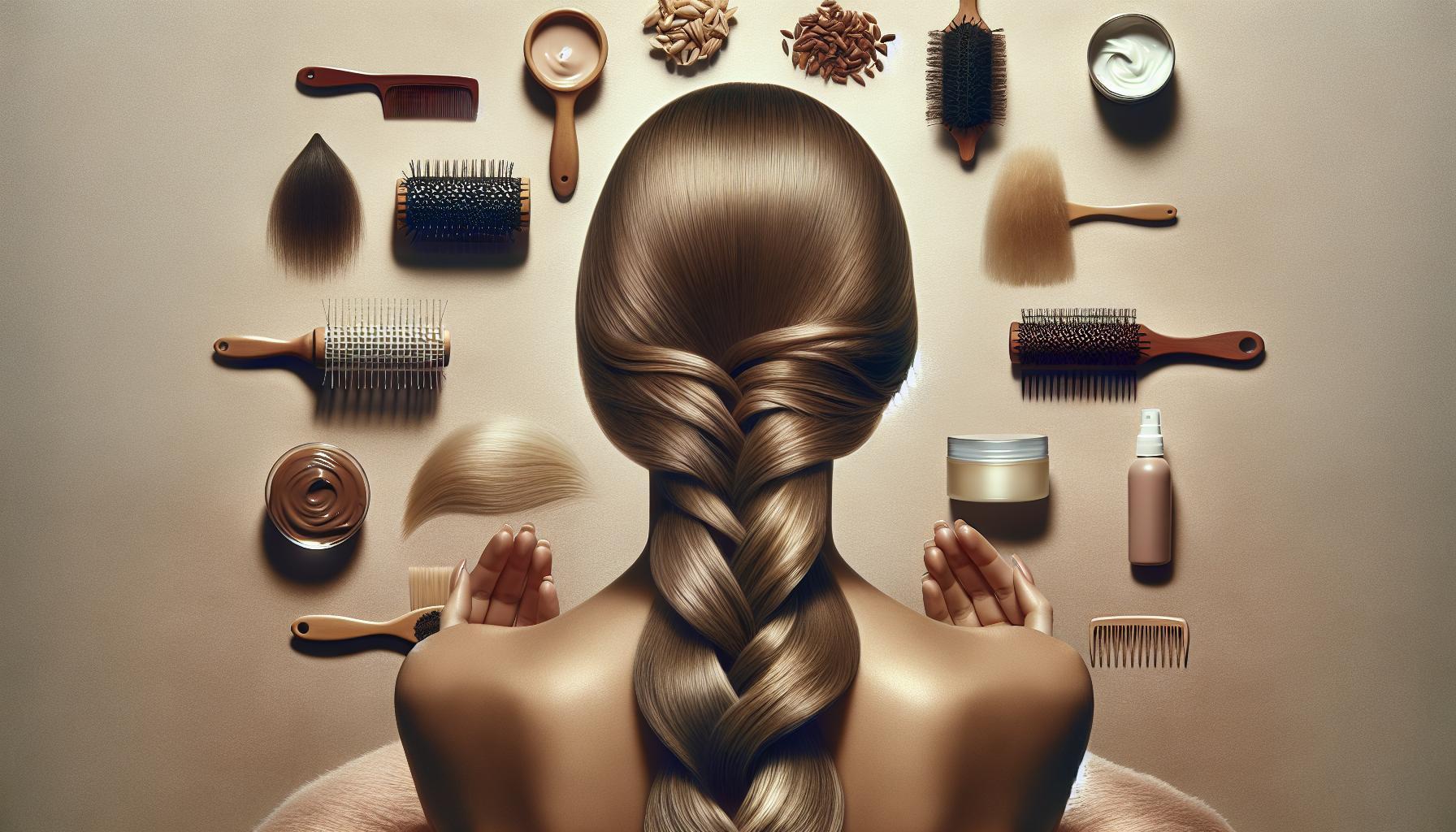Have you ever found yourself frantically searching for ways to undo a hair color disaster? Whether it’s an unexpected shade of neon or a mishap with a DIY kit, knowing how to quickly correct hair dye mistakes is crucial. This guide offers effective solutions for emergency color correction, ensuring you can restore your locks to their desired hue with confidence.
Contents
- Understanding the Science Behind Hair Dye Removal
- Quick Fixes: Household Products That Can Help
- Step-by-Step: DIY techniques for Effective Color Correction
- When to seek professional Help: Recognizing Hair Emergencies
- Preventing future Color mishaps: Tips for Safe Dyeing
- The Role of pH in Hair Color: What You Need to Know
- Caring for Your Hair Post-Correction: Repair and Restore
- Q&A
- Concluding Remarks
Understanding the Science Behind Hair Dye Removal
The chemistry behind hair dye and its removal is a interesting interplay of agents that can either cling to or release from the strands of hair. At its core, the process of hair dye request involves tiny pigment molecules infiltrating the hair shaft, often requiring specific alkaline solutions to open the cuticle and allow these colors to penetrate. Understanding how these molecules bond with hair fibers is crucial for effective and swift removal, particularly in emergency situations where you need to rectify an unwanted color quickly.
How Hair Dye Bonds to Hair
When hair dye is applied, the small pigment molecules become trapped inside the hair structure. This is predominantly due to the interaction between the dye’s chemical bonds and the keratin proteins in your hair. The process can vary based on whether the dye is permanent, semi-permanent, or temporary:
- Permanently dyed hair: This involves oxidative dyes that create larger molecules during processing, resulting in strong bonds that are more difficult to remove.
- Semi-permanent hair dye: These dyes do not rely on oxidative processes, allowing them to wash out gradually but also making them easier to remove if immediate action is taken.
- Temporary hair dye: Often simply coats the outer layer of the hair without penetrating, making them the simplest type to wash out.
Methods for Removing Hair Dye
Depending on the type of dye used, different removal methods can be employed, each utilizing unique scientific principles. Here are a few:
| Method | Description |
|---|---|
| Clarifying Shampoo | These shampoos contain stronger cleansers that can lift color molecules—ideal for semi-permanent dyes. |
| Vitamin C Treatment | Crushed Vitamin C creates a chemical reaction that can help pull dye out without damaging the hair as much. |
| Baking Soda and Shampoo | A mixture that can help strip color due to baking soda’s abrasive qualities combined with the cleansing effect of shampoo. |
| Color Remover Products | Commercially available products designed specifically for dye removal, typically targeting permanent hair color. |
Each method has its strengths and weaknesses, making it essential to choose based on the dye type and desired outcome. While some may be more familiar to the average consumer, a clear understanding of the science behind these techniques enables you to select the fastest and most effective method to correct an unexpected hue.
Quick Fixes: Household Products That Can Help
When you find yourself in a hair dye disaster, knowing where to turn for quick solutions can save the day. Many everyday household products can effectively assist in color correction, providing a much-needed rescue for your locks. Whether it’s an accidental mishap or an unexpected shade,these items might be just what you need to restore your hair’s natural hue.
common Household Remedies
- Baking Soda: This powerful ingredient is renowned for its deep-cleansing properties. Mix a tablespoon with your regular shampoo and lather it into your hair. Let it sit for about 10 minutes before rinsing. The abrasive texture of baking soda can definitely help lift unwanted color.
- Dish Soap: Effective in removing oils and grease, dish soap can also tackle excess hair dye. Use it as a shampoo, letting it sit for a couple of minutes before rinsing. Be cautious, as it can be quite drying.
- White vinegar: A natural clarifying agent, white vinegar can definitely help fade hair color gently. Mix one part vinegar with three parts water and use it as a final rinse after shampooing.
- Vitamin C Tablets: Crush a few vitamin C tablets into a fine powder and mix with shampoo to create a paste. Apply it to the affected areas, leave it on for about 30 minutes, and then rinse. This method is particularly effective for semi-permanent dyes.
Other Effective Solutions
For those facing stubborn color stains or intensive dye errors, consider these additional products that you likely have on hand:
| Product | How It Works | usage Instructions |
|---|---|---|
| Olive Oil | Softens the hair and helps lift dye. | Warm a small amount and massage it into your hair. Leave for at least 30 minutes before washing out. |
| Hair Conditioner | acts as a solvent for mild hair dyes. | Apply a generous amount to your hair and let it sit for several minutes before rinsing. |
| Hydrogen peroxide | Lightens hair quickly but should be used cautiously. | Mix a small amount with water and apply with a cotton ball, checking for results every five minutes. |
These household items not only demonstrate how to remove hair dye fast in emergency situations, but they also showcase the versatility of what you have around the house.With the right approach, you can effectively address hair color mishaps without needing to resort to professional help instantly. Always remember to do a patch test first, especially when using stronger remedies, to ensure your hair and scalp remain healthy throughout the correction process.
Step-by-Step: DIY techniques for Effective Color Correction
When faced with an unexpected hair color mishap, knowing some simple DIY techniques can empower you to regain control over your tresses. Whether you ended up with a fiery orange instead of a soft blonde, or you applied a shade that was far too dark, effective color correction can be a lifesaver. Below, we’ll guide you through some straightforward yet impactful methods to remove or adjust hair dye quickly.
Understanding Color Theory
Before diving into specific techniques, it’s essential to grasp the basics of color theory. Colors on the color wheel oppose each other in varying ways, which can guide you in selecting the right correction method. For example, if your hair has taken on an unwanted brassy tone, using a violet-based shampoo or conditioner can effectively neutralize those warmer hues.
Basic DIY techniques for Quick Fixes
Here are some effective methods you can implement immediately to address unwanted hair dye:
- Clarifying Shampoo: This is often the first line of defense. Use a clarifying shampoo for a few washes to help lift the unwanted color. Leave it on for 5-10 minutes before rinsing.
- Vitamin C Treatment: Crush a few Vitamin C tablets and mix with a clarifying shampoo. Apply the mixture to your hair and let it sit for 30-60 minutes.Rinse thoroughly.
- Baking Soda Paste: Create a paste from baking soda and water. apply this paste directly to the dyed sections of your hair. Let it sit for about 20-30 minutes before rinsing.
- Dish Soap Hack: For drastic measures, mix your regular shampoo with a small amount of dish soap. Use this sparingly, as the dish soap is much stronger and can dry out your hair.
Best Practices for Home Color Correction
While you might be eager to reverse your hair color misadventure, following safety precautions ensures you don’t cause further damage. Consider these best practices:
| Tip | Clarification |
|---|---|
| Strand Test | Always do a strand test before applying any mixture to your full head. This helps gauge the effect on a small section first. |
| moisturize After | Use a deep conditioner after any color removal technique to nourish your hair and restore moisture. |
| Consult a Professional | If results are inconsistent or if your hair feels damaged, a professional stylist may provide a more tailored solution. |
These DIY color correction techniques not only provide immediate relief but also educate you on essential principles of hair color management. By equipping yourself with these skills, you can tackle mishaps effectively and foster better hair health in the long run.
When to seek professional Help: Recognizing Hair Emergencies
Recognizing when to seek professional intervention can be the difference between a minor inconvenience and a full-blown hair emergency. If you’ve found yourself in a predicament after a DIY hair dye job,it’s essential to identify certain red flags that signal it’s time to call in the experts. Hair emergencies can manifest in various forms, from unexpected colors to severe damage, and understanding these signs can save your hair—and your sanity.
Common Indicators of a Hair Emergency
When you’re faced with an unwanted change in hair color or texture, look for these critical indicators that suggest professional help is necessary:
- Severe Color Discrepancies: If your hair has turned an outrageous color that is far from your intended shade, especially if it is indeed green, orange, or patchy, professional assistance is usually warranted to avoid DIY mishaps.
- Burning or Irritation: Experiencing pain, burning, or significant discomfort during or after dye application is a clear sign to stop and seek professional advice immediately.
- Extensive damage: If your hair feels excessively brittle, breaks easily, or has lost its luster you might potentially be facing irreversible damage, indicating that a specialist is needed.
- Allergic Reactions: Signs like swelling, itching, or rashes can indicate an allergic reaction to hair dye, which requires immediate medical attention.
Consider Professional Help for Complex Situations
Some situations go beyond simple color correction and require the expert touch of a stylist. Here are a few contexts in which a professional should be your next step:
| Situation | When to Seek help |
|---|---|
| Multi-color or Ombre Jobs | When fading or blending is uneven, making it too complicated for at-home correction. |
| Rescue from Box Dye | If you’ve used a box dye that dramatically altered your hair and you need to transition to another color safely. |
| Multiple Rinses Needed | When frequent washing or removing dye has not improved the situation and has left hair dry or damaged. |
| Persistent stains on Skin or Scalp | When stains remain long after the dye has been removed, leading to irritation or discomfort. |
When facing the dilemma of how to remove hair dye fast, it’s essential to balance expedience with care. Recognizing the moments when home remedies might exacerbate your situation is vital. Hair color disasters can happen to anyone, but knowing when to reach out for emergency color correction can help restore your hair to its desired state while maintaining its health. Prioritize your hair’s health by consulting with a professional when in doubt.
Preventing future Color mishaps: Tips for Safe Dyeing
When it comes to hair dyeing, the thrill of changing your look can quickly turn into a nightmare if things go awry. Fortunately, you can take proactive measures to safeguard your luscious locks from unexpected color mishaps. This section offers practical insights for anyone looking to enhance their hair coloring experience while minimizing the risk of needing emergency color correction.
Know Your Hair Type
Understanding your hair’s specific needs is crucial before applying any dye. Hair texture, porosity, and thickness significantly influence how well the dye will take.For instance, fine hair absorbs color more quickly than coarse hair, which may require longer processing times.
- Fine Hair: Use semi-permanent dyes that require less processing time.
- coarse hair: Opt for permanent dyes but ensure you leave them on for the recommended time to achieve the desired color.
Conduct a Patch Test
Before fully committing to a new shade, always conduct a patch test. This step helps identify any potential allergic reactions to the dye, minimizing the risk of rash or irritation. Simply apply a small amount of the dye on a discreet section of skin or hair and monitor it for 48 hours. If irritation occurs, you can avoid a larger disaster during the full application.
Invest in Quality Products
Using high-quality hair dye is a vital preventive measure. Cheaper products may contain harsh chemicals that can lead to unpredictable results or hair damage. Look for brands with positive reviews and opt for formulas designed to nourish as they color.
| Product Criteria | Recommended Brands |
|---|---|
| Ammonia-free | Clairol Natural Instincts, L’Oreal Casting Crème Gloss |
| Vegan and Cruelty-free | Madison Reed, Manic Panic |
| Hydrating and Nourishing | Schwarzkopf Color ultime, Garnier nutrisse |
Follow Instructions Carefully
Each hair dye product comes with specific application guidelines.It may be tempting to skip steps or alter the process, but this is a recipe for disaster.Adhering strictly to the manufacturer’s instructions will help ensure an even color result, reducing the likelihood of needing to learn how to remove hair dye fast in the aftermath. Pay particular attention to timing and the recommended applications for specific hair types.
By taking these essential precautions, you can significantly decrease the chances of facing unexpected hair color disasters and gracefully enjoy your new look with confidence.
The Role of pH in Hair Color: What You Need to Know
Understanding the connection between pH levels and hair color is crucial for anyone navigating the world of hair dyeing, especially when seeking to remove unwanted hues. The pH of your hair products plays a significant role in how color interacts with your strands, affecting everything from the vibrancy of your new shade to the effectiveness of color correction strategies.
the Science of pH and Hair Color
Hair has a natural pH level that hovers around 4.5 to 5.5, which helps maintain its integrity and manageability. Hair dyeing tends to disturb this balance, as many coloring products have alkaline properties (higher pH levels). This can lead to the hair cuticle opening up,allowing for more considerable dye penetration. However,if the pH is too high,it can cause damage,making hair porous and more prone to fading. Therefore,understanding the pH levels in your coloring products can guide you towards a healthier dyeing experience.
How pH Affects Color Removal
When it comes to correcting a dye job, the pH of your hair and the products used can either facilitate or hinder the removal process. For effective color correction,it is essential to use products with a balanced pH that can gently help close the hair cuticle. This helps prevent further damage while also allowing some of the unwanted color to be released.
Here’s a simple rundown of how different pH levels can affect hair dye removal:
| pH Level | Effect on Hair | Recommended Products |
|---|---|---|
| Low (Acidic < 4.5) | Can definitely help seal the cuticle, reducing color washout | Acidic shampoos or rinses |
| Neutral (4.5-5.5) | Maintains hair integrity, ideal for everyday use | pH-balanced conditioners |
| High (Alkaline > 5.5) | Opens cuticle, allows for dye penetration, but can cause damage | Clarifying shampoos |
practical Steps for color Correction
If you’ve dyed your hair and are faced with a color you’re unhappy with, you can use the knowledge of pH levels to guide your actions.First, it’s advisable to avoid further alkaline treatments, as they can exacerbate the problem. Rather,opt for pH-balanced products that will assist in color removal without adding unnecessary stress to your hair.
For example, rinsing your hair with a mix of vinegar and water (which is acidic) can help lower the pH temporarily, sealing the cuticle and minimizing further dye retention. Meanwhile, you can explore more targeted solutions, like color removers, which often contain ingredients formulated to react at specific pH levels, effectively stripping unwanted color while being gentle on the hair.
By being mindful of pH in your hair care routine, you not only enhance your understanding of the dyeing process but also equip yourself with the essential knowledge needed for effective color correction when the need arises.
Caring for Your Hair Post-Correction: Repair and Restore
After the tumultuous journey of color correction, your hair is likely in need of some serious TLC. The aftermath of a dye mishap can leave strands feeling brittle, dry, and lifeless. Understanding how to effectively repair and restore your hair post-color correction is crucial not just for aesthetics but for maintaining the health of your mane. Let’s delve into practical strategies that will breathe life back into your locks.
Hydration is Key
One of the first steps to take after correcting your hair color is to ensure adequate moisture. Chemical processes can strip natural oils, leading to dryness. incorporate these strategies into your routine:
- Deep Conditioning Treatments: Aim for deep conditioning masks at least once a week. Look for products rich in nourishing ingredients like argan oil, shea butter, and keratin.
- Leave-in Conditioner: Use a quality leave-in conditioner daily to combat frizz and enhance shine. This provides continual moisture throughout the day.
- Hydrating Shampoo: Switch to a sulfate-free, hydrating shampoo to gently cleanse without further drying your hair.
Embrace a Gentle Care Routine
After a color correction experience,it’s essential to handle your hair with care to prevent further damage. Consider adopting a more gentle hair care routine. Here are some tweaks you can implement:
- Limit Heat Styling: Give your hair a break from heat tools. If necessary,always use a heat protectant before styling.
- Opt for Wide-Tooth Combs: When detangling, use a wide-tooth comb rather than a brush, especially on damp hair, to minimize breakage.
- Scheduling Trims: Regular trims help remove split ends and promote healthier hair overall.
Nourish from Within
Restoration doesn’t just happen on the outside; nourishing your body can significantly contribute to the health of your hair. Consider the following dietary inclusions:
| Food | Benefit |
|---|---|
| Salmon | Rich in Omega-3 fatty acids, promoting scalp health. |
| Spinach | High in iron and vitamins A and C, crucial for hair growth. |
| Eggs | Source of protein and biotin, essential for strong hair. |
| Nuts | Provide healthy fats and zinc for hair repair. |
Incorporating these elements into your life can be instrumental in restoring your hair to its former glory after a botched dye job. Committing to proper hydration, gentle handling, and a nourishing diet will not only enhance your hair’s appearance but also promote its overall health in the long term. As you navigate the nuances of emergency color correction, remember that the path to recovery may take time, but your hair will thank you for it!
Q&A
How to Remove Hair Dye Fast: Emergency Color correction?
To remove hair dye quickly, use color remover solutions or a clarifying shampoo. These methods can help lighten or eliminate the dye in a short amount of time. Always follow up with a deep conditioning treatment to minimize damage.
For a more natural approach, consider using baking soda mixed with a gentle shampoo. This can also help lift some of the dye while being less harsh on your hair. For especially stubborn colors, applying a store-bought color remover specifically designed for emergency color correction can yield faster results.
What is the best method for removing hair dye?
The best method typically combines a color remover and a clarifying shampoo. both options are effective for different types of hair dye—semi-permanent dyes may wash out with regular shampoo, while permanent dyes may require more intensive treatment.
Using an at-home color remover can also work wonders. Just be cautious of the product you choose and follow the instructions to prevent additional damage. If you’re unsure, consult a professional stylist for the safest methods to achieve emergency color correction.
Why does hair dye sometimes not wash out?
Hair dye can be difficult to remove due to the strength of the pigments and bond they form with the hair. Permanent dyes, particularly, penetrate the hair shaft and create a lasting change that standard washes won’t undo.
Understanding the difference between permanent, semi-permanent, and temporary dyes is crucial. Each type has a unique chemical makeup that influences how easily it can be lifted or removed. Consider consulting hair care experts for personalized solutions based on your specific dye type.
Can I use household products to remove hair dye?
Yes, household products like baking soda, dish soap, and vinegar can help remove hair dye. However, these should be used with caution as they may cause dryness or damage if misused.
For best results, mix baking soda with shampoo or apply a mixture of vinegar and water as a rinse. Always follow up with a deep conditioner. If you want additional ideas and support, consider checking out our article on hair care tips.
How long does it take to remove hair dye?
The removal time varies depending on the method used and the dye’s properties. Using a color remover can take as little as 20 minutes, while natural methods may take longer.
It’s essential to keep in mind that some methods may require multiple applications for best results. if you’re dealing with a particularly stubborn color, patience and care are crucial to achieving the desired shade without compromising your hair’s health.
What should I do after removing the hair dye?
after removing hair dye, deep conditioning treatments are vital to restore moisture. This is especially crucial if you used strong chemicals or harsh methods for removal.
Apply a rich,nourishing conditioner or a hair mask to help rejuvenate your locks. Additionally, consider waiting a few weeks before applying any new color to allow your hair to recover from the process. For tips on maintaining healthy hair post-dye, explore our other articles.
Concluding Remarks
tackling unwanted hair dye can feel overwhelming, but armed with the right methods and knowledge, you can navigate through your color correction journey with confidence. Whether you opt for a gentle clarifying shampoo, a baking soda treatment, or even a professional color remover, remember the importance of understanding your hair’s unique needs. Each technique can yield different results depending on your hair type and the dye used, so approach each method with care and patience.
Your hair tells a story, and while a misstep in color can feel like a detour, it doesn’t have to derail your hair journey. We encourage you to explore further—consider experimenting with treatments that not only remove unwanted dye but also nourish and restore your hair’s health. Engage with communities and forums, seek advice from professionals, and share your experiences.Your hair is an extension of your identity, and every step you take towards its care is a step towards embracing your true self. Remember, you’re not alone in this; countless others are navigating the same path, and together, we can learn, share, and grow. Here’s to the vibrant, healthy hair that awaits you!

